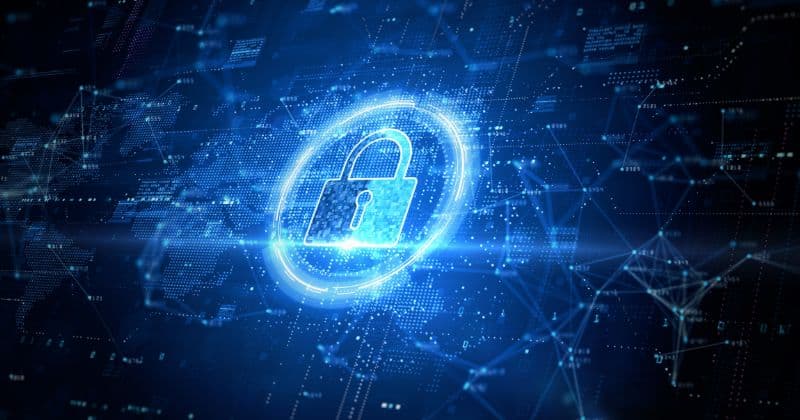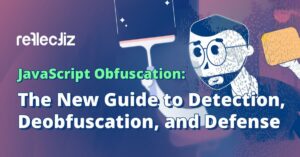Gartner Top Trends for 2025: What Security Leaders Need to Know

As 2025 gets into full swing, the cybersecurity landscape continues to evolve at a breakneck pace. The rise of AI-driven threats, increasing regulatory pressures, and the ever-present risk of cyberattacks mean that security and risk management (SRM) leaders must adapt quickly. To help them do that, many look to Gartner’s reports on cutting-edge cybersecurity trends, so in this article, we have condensed the most important insights and predictions from one of its latest: Gartner Top Trends in Cybersecurity for 2025. Read on for an overview of the trends that will be shaping security this year.
1. Generative AI is Reshaping Data Security
Generative AI (GenAI) is revolutionizing businesses, but it also introduces new risks. The traditional method of training AI is with real-world data, but this can be problematic as it needs to be anonymized to avoid legal and privacy risks. In response, organizations are shifting toward using synthetic data to train their AIs instead. It’s more cost-effective and there are no privacy concerns.
Organizations can’t always avoid using unstructured public and in-house data though. This can include text, images, and video, and the need to secure it has given rise to the concept of Data Security Posture Management (DSPM). This emerging approach is a set of practices and technologies aimed at ensuring data security within an organization. DSPM focuses on identifying and cataloging sensitive data, both on-premises and in cloud storage, implementing access controls, compliance monitoring, threat detection, and data security risk management.
For maximum security, Gartner suggests that SRM leaders should be involved with implementing GenAI from the early stages:
“When SRM leaders are included from the planning stage in adopting GenAI features and third-party GenAI tools, they are 1.35 times more likely to prevent attempts to exfiltrate data and block external unauthorized access.”
2. From Prevention to Cyber Resilience
The traditional “zero-tolerance for failure” mindset in cybersecurity is fading because it’s almost impossible to ensure that a breach will never happen. Instead, organizations are focusing on building cyber resilience. This means accepting that breaches are inevitable while working to minimize their impact. It’s a holistic approach that includes:
Cultural Shift Towards Resilience: While doing everything to prevent security incidents, all employees are encouraged to view them as learning opportunities that can enhance overall resilience, and to maintain business continuity despite challenges.
Leadership Engagement and Awareness: Executive leaders recognize the connection between cybersecurity burnout and increased risks and work to reduce both.
Workload Evaluation and Distribution: Leaders distribute work more evenly across teams, particularly in smaller cybersecurity teams, which helps mitigate burnout and allows for skill development among emerging leaders.
Wellness Initiatives: These should focus on safeguarding team well-being and preventing burnout.
Leveraging Technology and Processes: Align available resources and technical capabilities to adopt the right mix of tools and vendors. This includes integrating AI and exploring cybersecurity mesh architectures for a better response to new threats.
Holistic Risk Management: This encompasses business continuity, disaster recovery, and third-party risk management.
Continuous Monitoring and Improvement: Continuous monitoring of cybersecurity posture and the regulatory landscape, i.e., staying informed about changes in laws that may affect liability regularly updating policies and procedures to maintain resilience.
Communication and Transparency: This means keeping stakeholders informed to reinforce trust.
3. Decentralized Cyber-Risk Management
This approach empowers individual resource owners within an organization to make autonomous decisions around cybersecurity risks, in contrast with traditional centralized decision-making, where all risk-related choices are made by a single governing body. As this can be slow and cumbersome, allowing employees to manage risks relevant to their specific areas helps businesses stay agile.
Decision makers are empowered to independently make informed decisions about cyber risks (while considering the broader organizational implications of their choices) and to facilitate this decentralized approach, organizations will need to implement centralized validation and conflict resolution processes to ensure they operate within a structured framework for oversight and collaboration. This helps maintain consistency in risk acceptance and escalation procedures across the organization.
Gartner thinks this balance of decentralized decision-making with centralized validation processes will be indispensable. The Reflectiz platform epitomizes this approach, enabling individual responses to security alerts within the broader context of the organization’s overall risk appetite. Reflectiz provides comprehensive third-party web risk management that leverages AI to cross-check the validity of any flagged issues against its extensive databases to significantly simplify decision-making.
4. Managing Machine Identities is Now a Priority
With the rapid rise of automation and AI, machine identities—such as service accounts, AI models, and cloud workloads—are becoming a key security focus. Cybercriminals are targeting these machine identities to gain unauthorized access to systems, so organizations must implement robust Identity and Access Management (IAM) strategies to mitigate these risks.
The report notes that “Gartner’s 2024 IAM Leadership Survey found that 54% of organizations have seen an increase in the number of identity-related breaches, with one in three organizations experiencing increased business interruptions, financial loss, or regulatory penalties from such incidents.”
It also reveals that “As many as 85% of identity-related breaches can be attributed to hacked machine identities such as service and automation accounts.”
Consequently, the report points out, “Nearly three in four organizations say that, “…effectively managing and securing identities” is a top 3 cybersecurity priority.”
5. The Cybersecurity Tool Paradox: Consolidation vs. Optimization
Security leaders are overwhelmed by the sheer number of cybersecurity tools available. While consolidating vendors can reduce complexity, it also increases the risk of vendor lock-in. Instead, organizations are focusing on cybersecurity mesh architecture, which allows for integration flexibility while balancing platform and point solutions.
Reflectiz is one cybersecurity tool suite that can easily complement any combination of other solutions as it’s remotely executed and does not require any special integration considerations. It protects the organization’s public-facing web presence with powerful scanning and detection technologies, revealing and blocking potent threats such as Magecart (which criminals are now attempting to supercharge with generative AI).
6. Addressing Cybersecurity Burnout
Security teams are under immense ongoing pressure, raising the prospect of high stress and burnout. Gartner predicts that “By 2027, CISOs investing in cybersecurity-specific personal resilience programming will see 50% less burnout-related attrition than peers who don’t.”
That’s why forward-thinking organizations are prioritizing:
● Workload management strategies
● Cybersecurity wellness initiatives
● Encouraging security teams to take necessary breaks and paid time off
Another tried-and-tested way of avoiding burnout is providing security teams with powerful, easy-to-use tools that simplify issue resolution. For instance, Reflectiz’s JavaScript deobfuscator effectively reverse engineers the reams of useless code that cybercriminals often use to disguise their malware, making it easier to identify and remove.
7. Tactical AI: Moving Past the Hype
While AI-driven cybersecurity solutions are promising, the hype around them raised expectations to levels that early implementations failed to meet. In 2025, organizations are taking a tactical approach to AI, integrating it into existing security workflows instead of replacing them entirely. The focus is on incremental improvements with measurable outcomes rather than hype-driven overhauls.
According to a survey cited in the report, “Less than 10% of security leaders say they have no plan to adopt GenAI for cybersecurity use cases,” which is a roundabout way of saying that more than 90% plan to implement tactical AI integrations in the coming year.
8. Expanding Security Culture and Behavior Programs (SBCPs)
Human error remains a top cybersecurity vulnerability, with 68% of breaches caused by human actions. Companies are expanding security awareness initiatives to go beyond phishing training to areas such as:
● Secure coding practices
● System misconfiguration prevention
● Unauthorized software installation
Gartner predicts SRM leaders will be looking to non-conventional methods such as behavioral psychology and nudge theory to reduce the likelihood of human actions causing breaches. Nudge theory posits that by modifying the “choice architecture,” or the environment in which decisions are made, organizations can guide individuals toward more beneficial behaviors without restricting their freedom of choice.
Here are some examples of relevant nudge theory tactics:
- Default Settings: Implementing secure defaults like multi-factor authentication.
- Visual Reminders: Using posters and digital signs for best practices.
- Training Gamification: Making training engaging through games and competitions.
- Social Proof: Sharing participation statistics to encourage compliance.
- Timely Alerts: Reminding employees of security practices during relevant tasks.
- Simplified Reporting: Streamlining the process for reporting security issues.
- Positive Reinforcement: Rewarding good cybersecurity behaviors.
- Personalization: Tailoring training to specific roles or departments.
…and here’s how behavioral psychology can contribute:
- Cognitive Bias Awareness: Educating staff on biases like optimism bias.
- Social Norms: Highlighting peer behaviors to motivate compliance.
- Framing Effects: Presenting information emphasizing the benefits of security.
- Loss Aversion: Stressing potential consequences of poor practices.
- Habit Formation: Encouraging routine integration of security practices.
- Feedback Mechanisms: Providing regular feedback on security behaviors.
- Commitment Devices: Promoting public commitments to security practices.
- Simplification: Making security protocols easy to understand and follow.
The report puts the benefits of combining GenAI with such approaches like this:
“By 2026, enterprises combining GenAI with an integrated platforms-based architecture in security behavior and culture programs will experience 40% fewer employee-driven cybersecurity incidents.”
9. Strengthening Response and Recovery for GenAI Risks
With businesses increasingly relying on third-party GenAI tools, there’s a growing emphasis on response and recovery strategies. Security leaders are establishing policies for pausing and exiting risky third-party relationships, strengthening incident response playbooks, and integrating business continuity planning with cybersecurity efforts.
With 45% of third-party web apps accessing user info without proper authorization, exposing organizations to immense legal and regulatory risks a robust defense like the Reflectiz platform is going to be indispensable in the year ahead.
Final Thoughts
The cybersecurity landscape in 2025 demands a holistic approach, one that balances innovation with resilience. Security leaders must proactively adopt AI-ready cybersecurity frameworks, optimize their security toolsets, and embed cybersecurity accountability throughout the organization.
By embracing these Gartner trends 2025, businesses can not only mitigate risks but also enhance security culture and operational resilience in an increasingly volatile digital world.
Subscribe to our newsletter
Stay updated with the latest news, articles, and insights from Reflectiz.
Your Website looks great!
But what’s happening behind the scenes?
Discover your website blind spots and vulnerabilities before it’s too late!







